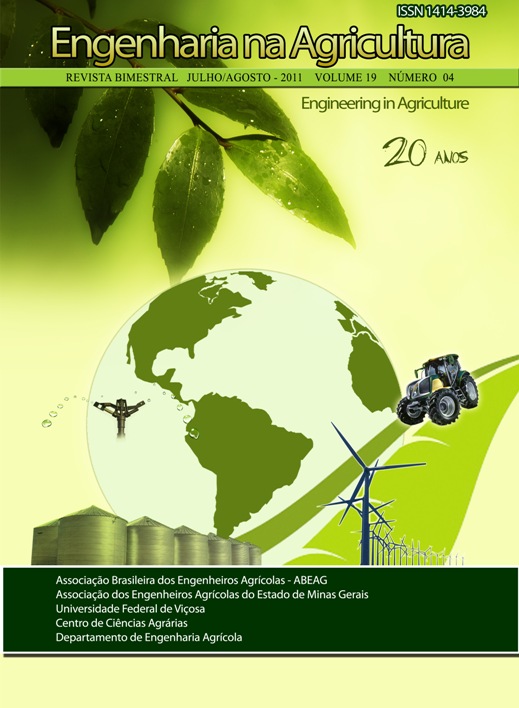ANALYSIS OF THE IRRIGAMETER COEFFICIENT AND ITS PERFORMANCE AND INFLUENCE ON THE ELEMENTS OF WEATHER IN ESTIMATIVE EVAPOTRANSPIRATION
DOI:
https://doi.org/10.13083/reveng.v19i4.131Keywords:
Agricultura irrigada, manejo da irrigação, estimativa da evapotranspiraçãoAbstract
At the Federal University of Viçosa, in Viçosa, MG, has developed a device evapopluviometric called Irrigameter, which allows measuring evapotranspiration, providing the right time to irrigate and the time of operation of an irrigation system or the speed of movement. In this research, the objectives were: (a) determine the Irrigameter coefficient (KI), monthly, in the highest 1, 2, 3, 4, 5 and 6 cm of water level in evaporimeter (b) assess the performance of Irrigameter to estimate evapotranspiration under conditions of Alto Paranaíba-MG, in August 2008 to May of 2009, and (c) examine the effects of monthly meteorological variables in the interactions of the reference evapotranspiration estimated by Irrigameter operating with different heights of the level of water in evaporimeter. The experiment was mounted in a completely randomized design with six treatments and three replications. The levels of water in evaporimeter to estimate the evapotranspiration of reference were: 4.1, 4.0, 3.6, 3.8, 3.3, 3.0, 2.5, 3.3, 3, 0 and 2.9 cm for the months of August, September, October, November, December, January, February, March, April and May, respectively. For the path analysis, the climatic factors that had high correlation with the estimate of the evapotranspiration of Irrigameter were the relative humidity for the months of August and January, minimum temperature and relative humidity for the month of September, maximum temperature and relative humidity, for the month of October and minimum temperature for the month of May.Downloads
Downloads
Published
How to Cite
Issue
Section
License
Authors who publish with this journal agree to the following terms:
The author(s) authorize(s) the publication of the text in the journal;
The author(s) ensure(s) that the contribution is original and unpublished and that it is not in the process of evaluation by another journal;
The journal is not responsible for the views, ideas and concepts presented in articles, and these are the sole responsibility of the author(s);
The publishers reserve the right to make textual adjustments and adapt texts to meet with publication standards.
From submission, the author is fully conceding the paper's patrimonial rights to the publication, but retaining the owner of its moral rights (authorship and paper's identification) according to Creative Commons Attribution-Noncommercial.








 Licensed by
Licensed by 